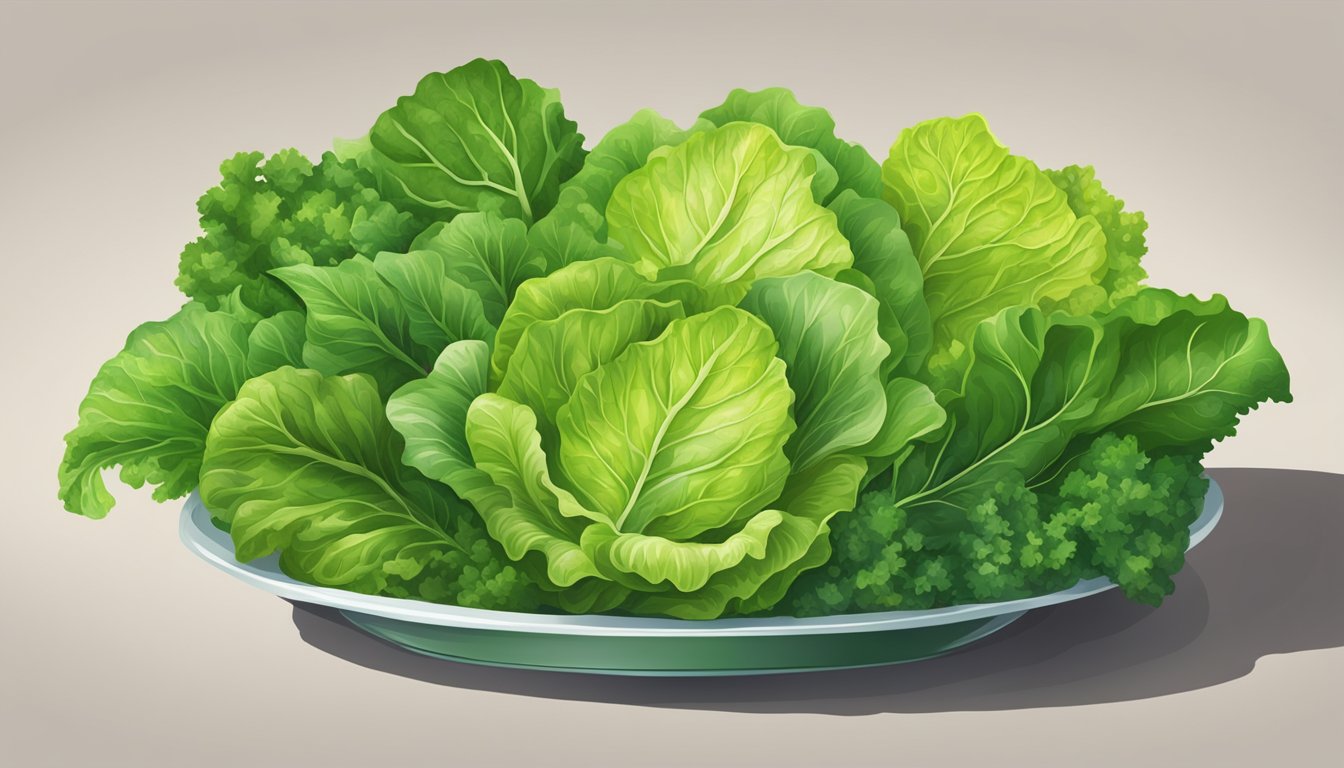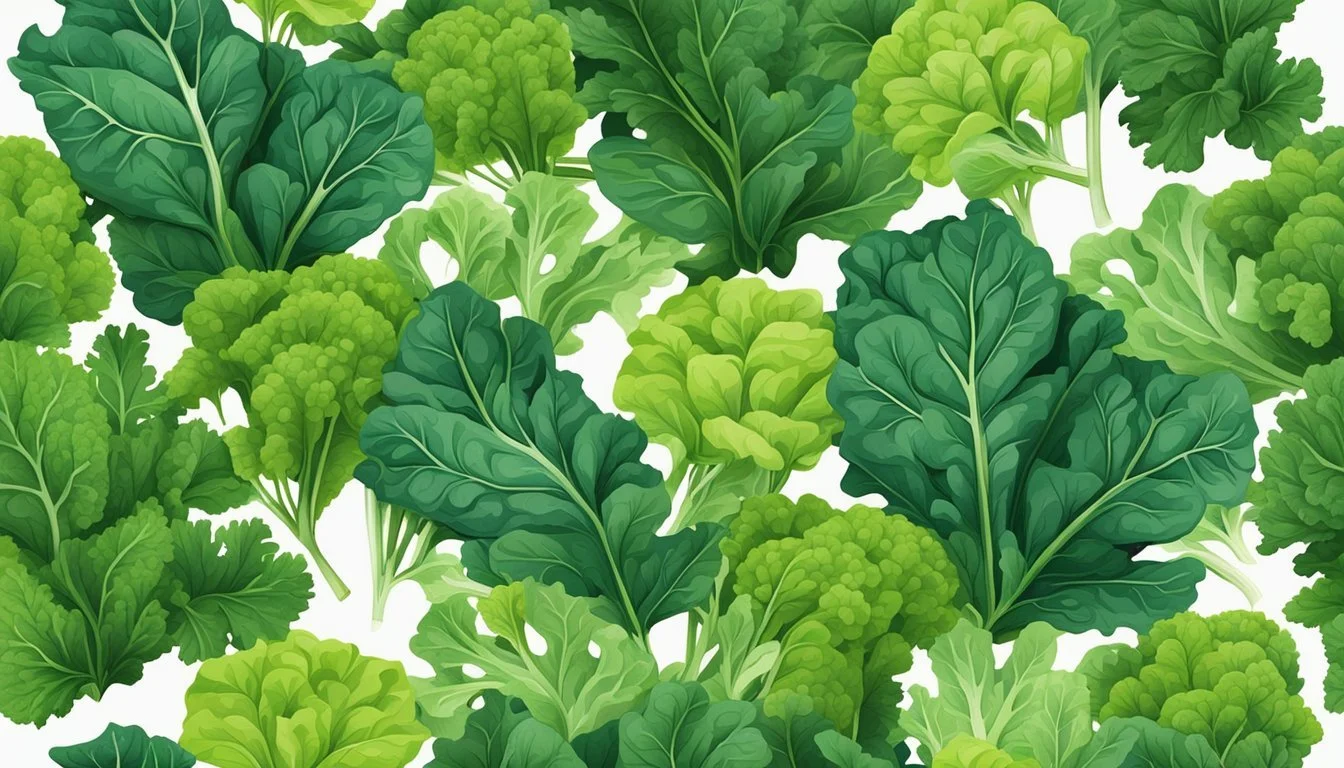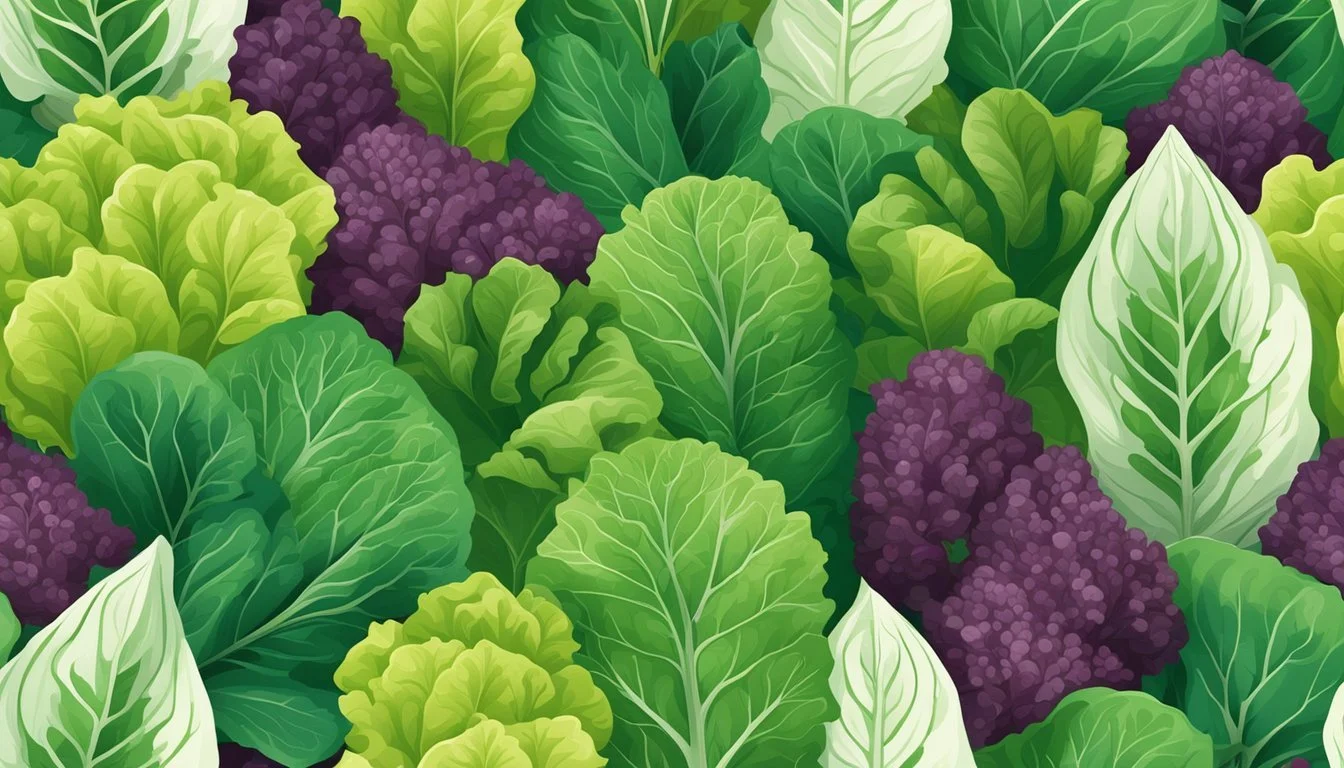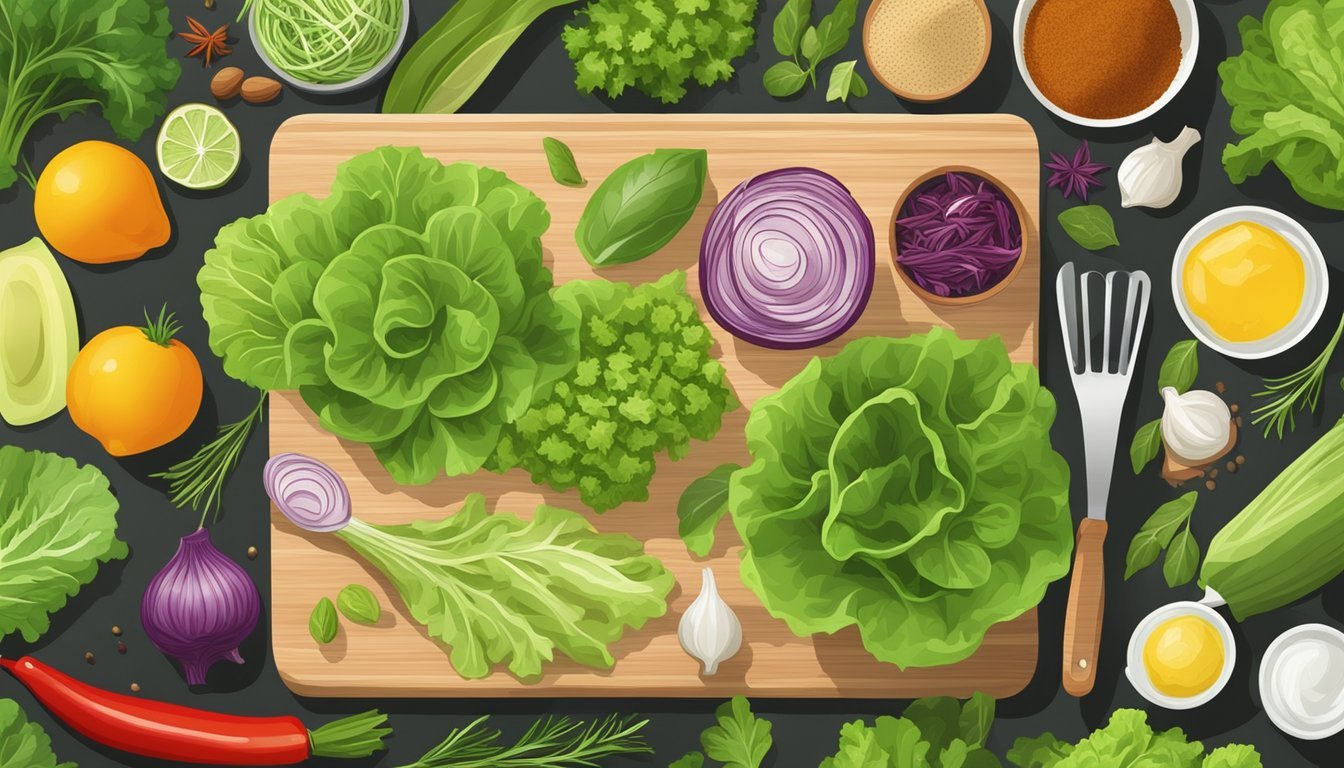Manoa Lettuce Substitutes
Best Alternatives for Recipes
When it comes to finding substitutes for Manoa lettuce, it's essential to identify alternatives that offer similar textures and flavors. Manoa lettuce, also known as Green Mignonette or Anuenue, is a versatile and nutrient-rich green that can be used in various dishes. Boston lettuce serves as an excellent alternative due to its big, leafy green head that can complement soups, salads, and plating presentations effectively.
For those seeking a heartier option, kale provides a robust texture that withstands cooking in addition to being consumed raw. Its slightly tougher leaves make it suitable for stir-fries and other cooked applications, much like Manoa lettuce. Spinach, with its tender texture and pleasant taste, can also replace Manoa lettuce in salads and sandwiches, though it may not have the same crispness.
Exploring these substitutes not only ensures that you can continue enjoying your favorite recipes but also introduces some exciting variations. Each alternative brings its unique qualities to the table, offering a fresh twist while preserving the nutritional benefits and culinary flexibility that Manoa lettuce is known for.
Understanding Manoa Lettuce
Manoa lettuce, a semi-heading variety known for its tender, buttery texture and adaptation to Hawaii's climate, offers unique benefits and cultivation requirements. This section explores its origins, cultivation practices, and nutritional profile.
Origins and Characteristics
Manoa lettuce, also known as Lactuca sativa, hails from Hawaii. It was developed at the University of Hawaii (UH), specifically for the unique environmental conditions of the islands. This variety is often referred to as "Green Mignonette" or "Anuenue."
The lettuce forms small, semi-heading rosettes. The leaves are medium to dark green, offering a tender and buttery consistency. This makes it a versatile ingredient, fitting well in salads, stir-fries, and as a garnish.
Cultivation Practices
Manoa lettuce thrives in the cooler elevations of Hawaii. It prefers nitrogen-rich soil and requires consistent moisture to grow well. The seeds should be planted about 1/4 inch deep and spaced 6 inches apart. Keeping the soil moist but not waterlogged is crucial to prevent seed rot.
Due to Hawaii's moderate climate, Manoa lettuce can be grown year-round. It matures in 45 to 60 days, making it a relatively fast-growing crop compared to other varieties. It's generally resistant to local pests but should be cultivated away from areas affected by Rat Lungworm Disease.
Nutritional Profile
Manoa lettuce is rich in nutrients, making it a healthy addition to any diet. It provides a good source of vitamins A and C, which are essential for immune function, vision, and skin health. Additionally, it contains folate, vital for DNA synthesis and cell division.
This lettuce variety is low in calories but high in fiber, making it a great choice for those looking to maintain or lose weight. The tender leaves also contain antioxidants that help protect cells from damage and support overall health.
Requirements for Growing Manoa Lettuce
Manoa lettuce thrives under specific conditions that ensure healthy growth and a bountiful harvest. Key factors include the right soil composition and pH levels, adequate water and moisture management, suitable temperature and climate, and protection from common pests and diseases.
Soil and pH Levels
Manoa lettuce grows best in nitrogen-rich soil with good drainage. Ideal pH levels range from 6.0 to 7.0, ensuring the soil is slightly acidic to neutral. This balance allows for optimal nutrient absorption. Avoid heavy clay soils, which can lead to poor drainage and root health issues. If soil acidity is too high, adding lime can help raise pH levels. Conversely, sulfur can be added to lower pH if the soil is too alkaline. Regular soil testing can assist in maintaining these levels.
Water and Moisture
Consistent moisture is crucial for Manoa lettuce, but it's essential not to overwater. The soil should remain moist but not waterlogged to prevent root rot and seedling damping off. A well-established watering schedule, adjusting frequency based on weather conditions and soil moisture levels, is recommended. Drip irrigation systems are beneficial, providing water directly to the roots and reducing foliage wetness, which can attract pests and diseases. Mulching can also help retain soil moisture and keep roots cool.
Temperature and Climate
Manoa lettuce prefers cooler growing conditions, ideally between 60°F and 75°F. It's well-suited for areas with milder climates and can be grown year-round in such regions. Lettuce typically bolts and becomes bitter when exposed to sustained temperatures above 80°F. Therefore, planting at higher elevations in warmer climates is beneficial, as these areas have cooler temperatures. Additionally, protection from extreme heat using shade cloths can help maintain optimal growing conditions.
Common Pests and Diseases
Manoa lettuce is susceptible to common pests and diseases. Slugs and aphids frequently attack lettuce plants, and it's important to monitor and control their presence using organic or chemical measures. Diseases such as tipburn and downy mildew can also affect lettuce. Tipburn is often due to inconsistent moisture levels, while downy mildew thrives in humid conditions. Using resistant varieties, maintaining plant hygiene, and proper spacing can help mitigate these issues. Regular inspection is key to early detection and management.
By adhering to these requirements, a robust and healthy crop of Manoa lettuce can be achieved.
## Lettuce Substitutes Similar to Manoa Lettuce

Manoa lettuce has a tender texture and mildly sweet flavor. Several lettuce varieties share these characteristics and can be used as substitutes.
### Romaine Lettuce
Romaine lettuce is a sturdy option with crisp leaves and a slightly bitter taste. Its long leaves make it ideal for salads, wraps, and as a sandwich filler.
Romaine's crunchy texture contrasts well with softer ingredients, providing a balanced mouthfeel. It is also rich in vitamins A and K, making it a nutritious alternative.
### Green Mignonette
Green Mignonette is similar to Manoa in texture and flavor, with tender leaves and a mild taste. It is often used in gourmet salads due to its delicate nature.
This variety is tender enough to pair well with lighter dressings and ingredients, allowing flavors to shine without overwhelming the palate.
### Butterhead Varieties
Butterhead lettuce varieties, such as Boston and Bibb, offer soft, buttery leaves. These varieties are known for their smooth texture and delicate flavor, making them a suitable substitute for Manoa lettuce.
Butterhead lettuces hold dressings well and can be used in a variety of dishes, from simple salads to more elaborate presentations. Their tender nature allows for easy integration into many recipes.Alternative Greens to Manoa Lettuce
Substituting Manoa lettuce with other greens can bring diverse flavors and nutrients to your salads and dishes. Spinach, kale, arugula, and cabbage each offer unique qualities worth considering.
Spinach
Spinach is a versatile and nutrient-dense green that serves as an excellent alternative to Manoa lettuce. Rich in vitamins A, C, and K, spinach also provides a good source of iron and calcium. Its tender leaves can be used raw in salads or cooked in various dishes.
Baby spinach leaves are particularly popular for salads due to their soft texture and mild flavor. When using spinach, ensure it is thoroughly washed to remove any soil or grit.
Kale
Kale, another highly nutrient-rich green, is known for its robust flavor and crunchy texture. It stands out with its high fiber content and antioxidants like quercetin and kaempferol.
Kale comes in several varieties, including curly and lacinato (dinosaur) kale. Both types are excellent for salads, particularly when massaged with olive oil to soften the leaves. Kale can replace Manoa lettuce in more hearty dishes or even in green smoothies.
Arugula
Arugula, also known as rocket, brings a peppery, slightly bitter taste to salads. Its distinct flavor can add complexity to dishes that might otherwise rely on the milder taste of Manoa lettuce.
Arugula is rich in vitamins K and C and contains glucosinolates, compounds believed to have potential cancer-fighting properties. It's best used fresh in salads, pizza toppings, or as a garnish, enhancing the overall flavor profile of your meals.
Cabbage
Cabbage offers a crisp texture and can be an interesting alternative to Manoa lettuce. It is available in several types, including green, red, and napa cabbage. Green and red cabbage are often used in coleslaws and salads for their crunchy bite and durability.
Cabbage is packed with vitamin C and fiber, making it a nutritious choice. It holds up well in preparations where softer lettuce might wilt, such as in sandwiches or as a base for heavier salad dressings.
These greens not only replace Manoa lettuce but also enhance your meals with their varied textures and nutritional benefits.
Specialty Substitutes for Manoa Lettuce
For those looking to replace Manoa lettuce, certain specialty greens serve as excellent alternatives. These substitutes vary in flavor, texture, and nutritional content, allowing versatile uses in different culinary applications.
Cress and Chicory
Cress offers a peppery flavor that can enliven salads and sandwiches. It’s especially known for its tender leaves and nutrient density, containing high levels of vitamins A, C, and K.
On the other hand, chicory delivers a slightly bitter taste, making it a unique addition to mixes or as a stand-alone salad. Its crisp texture holds up well under dressings, providing a satisfying crunch.
Greens Flavor Profile Best Uses Cress Peppery Salads, Sandwiches Chicory Slightly Bitter Salads, Mixed Greens
Radicchio
Radicchio, characterized by its vibrant red leaves and bitter taste, is a striking substitute. It pairs wonderfully with sweet and acidic dressings, balancing out its robust flavor.
Radicchio's firm texture holds up well when grilled or roasted, offering diverse culinary possibilities beyond raw salads. Its bold appearance also adds a visual appeal to dishes.
Bok Choy
Bok Choy, a type of Chinese cabbage, provides a mild and crisp alternative. The white stalks and green leaves contribute different textures, making it ideal in both raw and cooked preparations.
While commonly used in stir-fries, it is equally suitable for salads and soups. Bok Choy’s nutritional profile includes high levels of vitamins A and C, making it a healthy choice.
Watercress and Curly Kale
Watercress is known for its pungent, peppery flavor, similar to cress but with slightly larger leaves. It’s rich in antioxidants and offers a potent health boost, making it suitable for fresh salads or garnishes.
Curly Kale, tough and fibrous, requires more preparation but is highly nutritious. Massaging the leaves can make them more palatable in salads. Curly kale is also versatile in smoothies, soups, and stir-fries due to its hearty texture.
Greens Flavor Profile Preparation Tips Watercress Pungent, Peppery Great for fresh salads and garnishes Curly Kale Tough, Fibrous Massage leaves for salads, use in smoothies and stir-fries
Growing and Using Lettuce Substitutes
Growing alternatives to Manoa lettuce involves careful planting, maintaining organic farming practices, proper harvesting, and imaginative culinary uses. This section explores each aspect in detail.
Planting and Seedlings
When planting substitutes such as spinach or endives, selecting the right seeds is crucial. Begin by seeding in nutrient-rich soil about 1/4 inch deep, maintaining a gap of 6 inches between seeds to allow ample growth space.
Ensure the soil is moist but not overly saturated to prevent seed rot. Utilize compost and organic matter to enrich the soil with necessary nutrients like calcium, promoting strong seedling development.
Organic Farming Practices
Maintaining organic farming practices ensures healthier produce. Implement mulching to retain soil moisture and deter weeds. Organic farming involves avoiding synthetic fertilizers and pesticides, focusing instead on natural compost and beneficial insects.
Rotation of crops and choosing disease-resistant varieties further enhance plant health. Regularly add organic compost to sustain soil fertility.
Harvesting and Storing
Harvesting leafy greens like spinach or endives typically involves cutting the outer leaves once they reach the desired size. Conduct harvesting in the early morning for optimal freshness.
Store the harvested greens in the refrigerator, ideally in a loose plastic bag with minimal air to extend freshness. Ensure productivity by regularly harvesting leaves, encouraging continuous growth.
Culinary Uses
Lettuce substitutes such as spinach and endives offer versatility in the kitchen. Use fresh spinach in salads or blend it into smoothies for added nutrients. Endives provide a delightful crunch in salads and can be grilled or added to soups.
These greens also make great additions to sandwiches, offering not just texture but a nutrient boost as well.
Tips for Choosing the Right Lettuce Substitute
Selecting the right substitute for Manoa lettuce depends on matching the texture, flavor, growing conditions, and nutritional needs. Below, detailed guidance can help make an informed choice.
Match the Texture and Flavor Profile
Choosing the right substitute starts with texture and flavor. For a tender and slightly sweet crunch like Manoa, Butterhead lettuce (like Bibb or Boston) makes an excellent choice.
For a more peppery taste, arugula can serve as a suitable alternative. Other options like endives and escarole offer a slight bitterness, making them ideal for those preferring a more complex flavor.
If a crisp texture is desired, consider iceberg or Crisphead lettuce varieties. In salads, bok choy can mimic the crunchiness while adding a unique twist.
Consider the Growing Conditions
When replacing Manoa lettuce, it's important to think about sourcing substitutes with similar growing conditions. Manoa lettuce thrives in cooler climates, so opting for greens that also favor cool weather ensures better availability and freshness. Spinach and kale are hardy and flourish under similar conditions.
Avoid substitutes that prefer heat, such as certain cabbages, which might not match the tender experience of Manoa. Endives and radicchio, part of the chicory family, also grow well in cooler environments and can be robust alternatives.
Nutritional Considerations
Nutritional value is crucial when finding a substitute. Manoa lettuce is rich in vitamins and minerals but some substitutes offer more targeted benefits. Arugula, for instance, is rich in calcium and antioxidants.
Meanwhile, spinach provides a higher iron and calcium content, making it a powerhouse for nutrition. Those needing more fiber might consider robust greens like kale or Bok choy.
Radicchio and endives add a cupful of nutrients while maintaining close resemblance in texture and appearance. It’s important to consider individual dietary needs and how a substitute may enhance or detract from the nutritional profile of one’s diet.
Advanced Techniques for Substitute Cultivation
Optimizing the growth of Manoa lettuce substitutes requires advanced techniques such as hydroponic growing systems to maintain nutrient balance and pest and disease resistance methods to ensure healthy crops.
Hydroponic Growing Systems
Hydroponic growing systems can significantly enhance the production of lettuce substitutes like endives, escarole, and bok choy. By utilizing hydroponics, growers can control nutrient levels precisely, ensuring that plants receive the optimal amounts of nitrogen and phosphorus required for robust growth.
These systems can be set up indoors or in greenhouses, allowing for year-round cultivation regardless of external weather conditions. Maintaining ideal water pH and nutrient concentration is essential for effective germination and growth. Using well-drained soil substitutes in these systems prevents root rot and facilitates better root aeration.
Specialized equipment such as nutrient film technique (NFT) channels or deep water culture (DWC) setups can be employed. Consistent monitoring and adjustment of the nutrient solution ensure balanced growth.
Pest and Disease Resistance
Growing lettuce substitutes like Heading Lettuce with enhanced pest and disease resistance techniques can greatly reduce crop loss. Implementing integrated pest management (IPM) strategies that combine biological, cultural, and mechanical control methods is crucial.
Using shade cloth can help protect plants from pests such as aphids and whiteflies by reducing excessive sunlight that encourages pest proliferation. Boosting soil health through organic amendments and beneficial microbes supports plant vitality and resilience against diseases.
Selecting varieties that are slow to bolt and naturally resistant to common diseases, such as powdery mildew and downy mildew, can minimize the need for chemical treatments. Regular scouting and timely intervention with natural predators or organic biocides keep the pest population under control, leading to healthier and more productive crops.
Innovative Recipes and Uses for Lettuce Substitutes
When Manoa lettuce isn’t available, a variety of substitutes can add interest and versatility to meals. From vibrant salads to hearty cooked dishes, these alternatives offer unique flavors and textures to enhance any recipe.
Salads and Sandwich Variations
For salads, alternatives like endives, escarole, and radicchio bring a pleasing bitterness that contrasts well with other ingredients. Kale and spinach offer robust flavors and can be used in nutrient-packed salads.
In sandwiches, arugula adds a peppery bite, while Boston lettuce and bok choy provide a mild and crisp texture. Iceberg lettuce and romaine can be used for a classic crunch. Chinese lettuce can also be a fresh addition to sandwiches, offering a slightly sweeter flavor.
Cooked Preparations
When it comes to cooking, substitutes like rainbow chard and cabbage are excellent choices. These greens can be added to soups or used in stir-fries. Kale can be sautéed with lime for a zesty side dish, while escarole pairs well in hearty stews.
Collard greens hold up well to heat and are ideal for braising. Swiss chard can be included in casseroles or as a topping for pizzas. Spinach can be quickly wilted and used in pastas.









